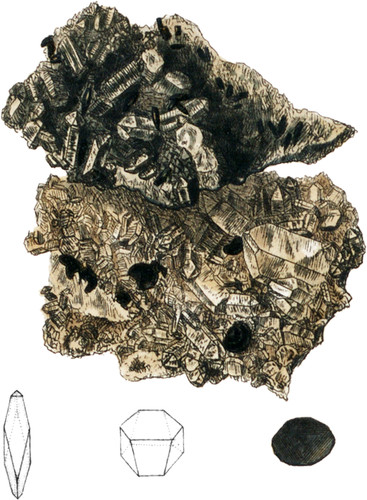 Enlarge
Enlarge
Exotic Mineralogy
Chichtonite
- Syn. Craitonite, Chichtonite. Bournon Catalogue, 430 & 468.
The Count first observed this substance in 1788, but it remained undescribcd until he published his Catalogue, where he has named it after Dr. C rich ton, first physician to the Emperor of Russia, and an excellent mineralogist. From his description the following characters are extracted. The primitive form is an acute rhomb of about 18°. and 162°.; this rhomb is divisible parallel to a plane perpendicular to its axis, but in no other direction does it show signs of laminæ; hence it is, from the general character of the modifications it undergoes, that it is taken for the primitive form.
Colour a deep opaque black, surface shining, with much lustre; cross fracture conchoidal. It is softer than Anatase; it scratches Fluor but not Glass. Infusible and unchanged by the blowpipe. Dr. Wollaston found it to contain Zirconia in the greatest quantity, with Silex, Iron, and Manganese.
The figures are taken from two specimens particularly mentioned in his valuable Catalogue, which the Count, with his accustomed zeal for science, has permitted me to engrave. The upper one is the variety in acute rhombs, with their apices truncated, resting upon crystals of Quartz coloured by Chlorite; the other is the laminated variety upon Quartz mixed with crystals of whitish Feldspar, or Adularia; these laminæ have striæ upon the surface indicating their origin from the rhomb; among these is on twelve-sided, as figured below.

